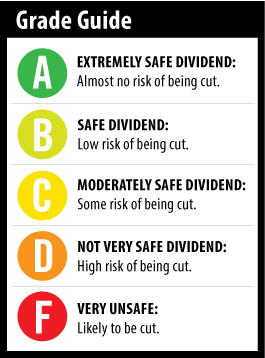 After Seadrill Limited‘s (NYSE: SDRL) shares fell sharply a few weeks ago after an earnings miss, I received a flood of emails asking if I still think the dividend is safe.
After Seadrill Limited‘s (NYSE: SDRL) shares fell sharply a few weeks ago after an earnings miss, I received a flood of emails asking if I still think the dividend is safe.
Seadrill is popular among dividend investors because of its rich 13% yield.
In April, I gave this deepwater drilling rigs provider an “A” rating for dividend safety due to six reasons, including recent dividend raises and a reserve fund of $0.16 per share that will be given back to shareholders through dividends and/or share buybacks.
[ad#Google Adsense 336×280-IA]But the stock’s 19% plunge has investors understandably worried.
I’m not going to comment on the likelihood of the stock’s rebound.
That’s not the purpose of the Safety Net.
Rather, this column is all about whether or not income investors need to worry about dividend cuts.
In Seadrill’s case, despite the poor quarterly results, management tried to quell investors’ fears by extending the period that it said the dividend would be paid.
In previous communications, the company said that the $1 per share quarterly dividend ($4 annually) was sustainable through the end of 2015. That time frame was lengthened through the end of 2016.
One thing I’m not thrilled with is that in the first six months of the year, the company paid out more in dividends than it generated in cash flow from operations.
Through June 30, Seadrill’s cash flow was $881 million. It paid out $925 million in dividends.
Last year at this time, though cash flow was less at $671 million, it paid out only $407 million in dividends.
Going forward, Wall Street projects Seadrill’s cash flow will come in at $2.3 billion next year and $2.6 billion in 2016, which will be more than enough to pay the dividend. Those projections have come down since I reviewed Seadrill in April. At that time, analysts forecast 2016 cash flow at $3 billion.
But Seadrill has over $18 billion in backlogged orders, which is likely the reason management has confidence that the dividend will continue to be paid at the current level.
Additionally, management believes that because its industry is going through a rough patch, it will be able to pick up assets at bargain prices in the near future. Those assets should produce cash flow, which will also help to sustain the dividend. However, there is no guarantee it will be able to do that.
Seadrill has an excellent track record when it comes to its dividend. It has raised the dividend every year since it started paying one in 2010. If you look at its dividend history, you’ll see a blip higher in 2012 that makes it look like a cut occurred in 2013.
 However, the company simply pushed up its first quarter 2013 dividend into the fourth quarter of 2012 and paid two quarters’ worth of dividends at once.
However, the company simply pushed up its first quarter 2013 dividend into the fourth quarter of 2012 and paid two quarters’ worth of dividends at once.
Management has earned the benefit of the doubt when it comes to the dividend.
That being said, the current cash flow situation – in which it doesn’t cover the dividend – is forcing me to downgrade the stock one notch.
Management said the dividend is safe through 2016, and I believe them.
But I can no longer give Seadrill my highest rating.
Dividend Safety Rating: B
— Marc Lichtenfeld
[ad#DTA-10%]
Source: Wealthy Retirement
